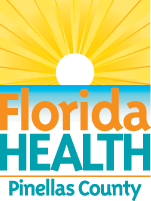It's a New Day in Public Health.
The Florida Department of Health works to protect, promote, and improve the health of all people in Florida through integrated state, county, and community efforts.
Vibrio Mythbuster
August 04, 2014
VIBRIO MYTHBUSTER
The naturally occurring organisms in the vibrio family have been in the news this week, but a lot of “myth-information” has scared beachgoers and visitors. The Florida Department of Health in Pinellas County (DOH-Pinellas) is providing information on what vibrio is and isn’t:
- It’s incorrect to call vibrio “flesh-eating bacteria.” (There is no such medical term and the organism is not a Pac-man consuming pac-dots. Please do not use this misnomer.)
- There are several varieties of vibrio that live in saltwater. The type in the news is Vibrio vulnificus, but there are other kinds.
- During the summer months when saltwater is very warm, vibrio numbers naturally increase.
- In 2014, as of Aug. 2, there have been 13 reported vibrio cases in all of Florida, with 3 deaths. Based on the millions of visitors to the state’s beaches, the percentage of exposure to beach waters versus contracting vibrio is extremely low.
- There have no Vibrio vulnificus cases in Pinellas County this year.
- Beach water is not the only source of vibrio infections. Eating raw or undercooked seafood is another common way to be infected. Raw oysters are a very common vibrio carrier.
- Vibrio enters the body through open wounds. Unlike the advice many of us received from mothers and grandmothers to “clean” cuts by wading in beach water, entering salty waters in beaches or fishing areas with cuts or wounds is not recommended.
- The majority of people exposed to vibrio may not have any severe symptoms. Some may have vomiting, diarrhea and stomach cramps.
- In those with chronic liver disease, Vibrio vulnificus can cause a severe, or even fatal, illness. Symptoms are fever and chills, decreased blood pressure (septic shock), and blistering skin lesions.
- Open wounds exposed to Vibrio vulnificus may lead to a breakdown and ulceration of the skin.
The Florida Department of Health’s Newsroom has fact sheets, answers to frequently asked questions about vibrio and video clips featuring its medical experts sharing vetted information about vibrio. Go to http://newsroom.doh.state.fl.us/2014/07/25/information-on-vibrio-vulnificus/ for resources. Subscribe to the RSS feed for updated information.
For information about DOH-Pinellas, go to www.PinellasHealth.com.
For Media Inquiries
@HealthyPinellas
@HealthyFla





Connect with DOH